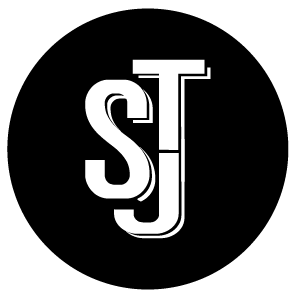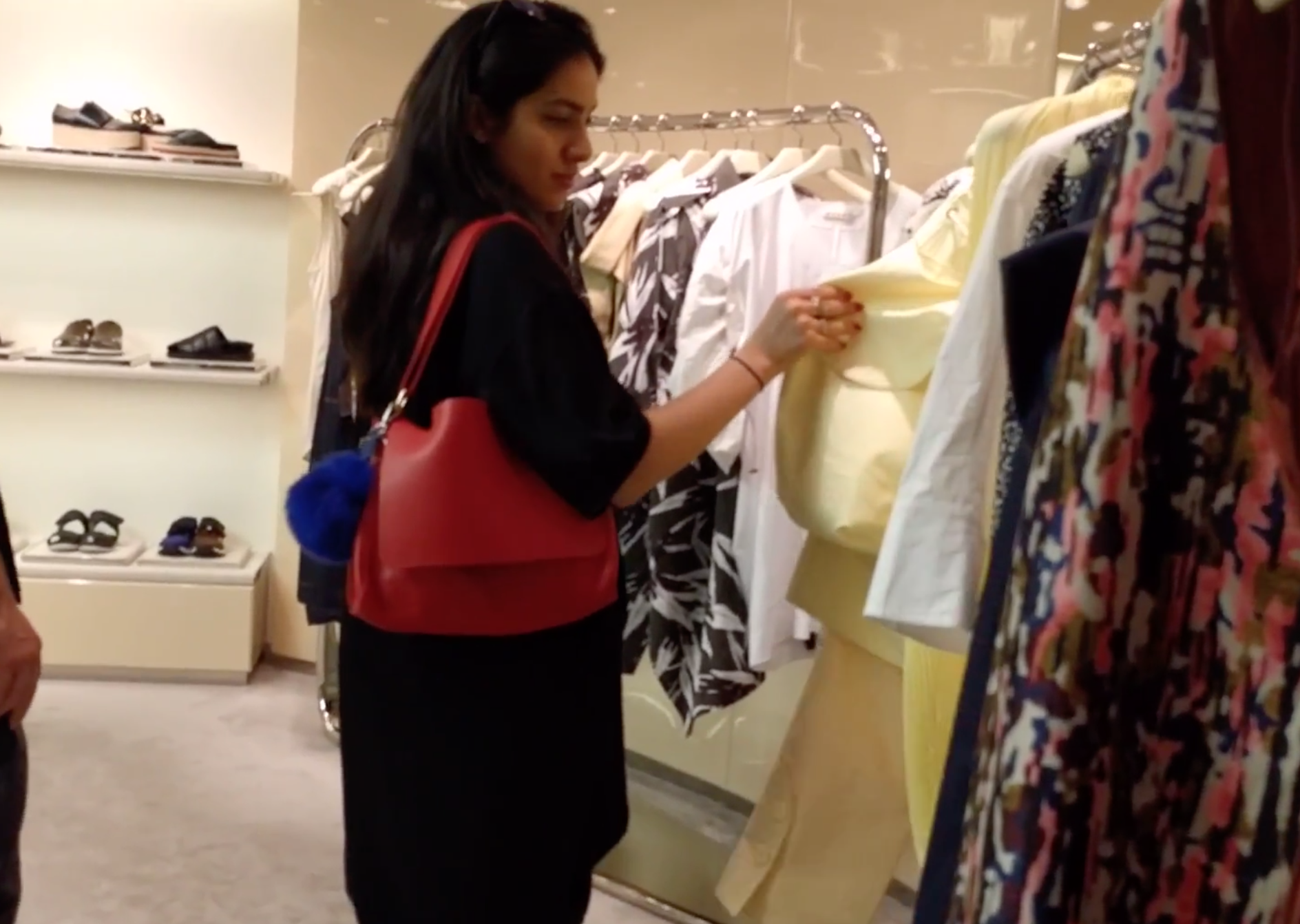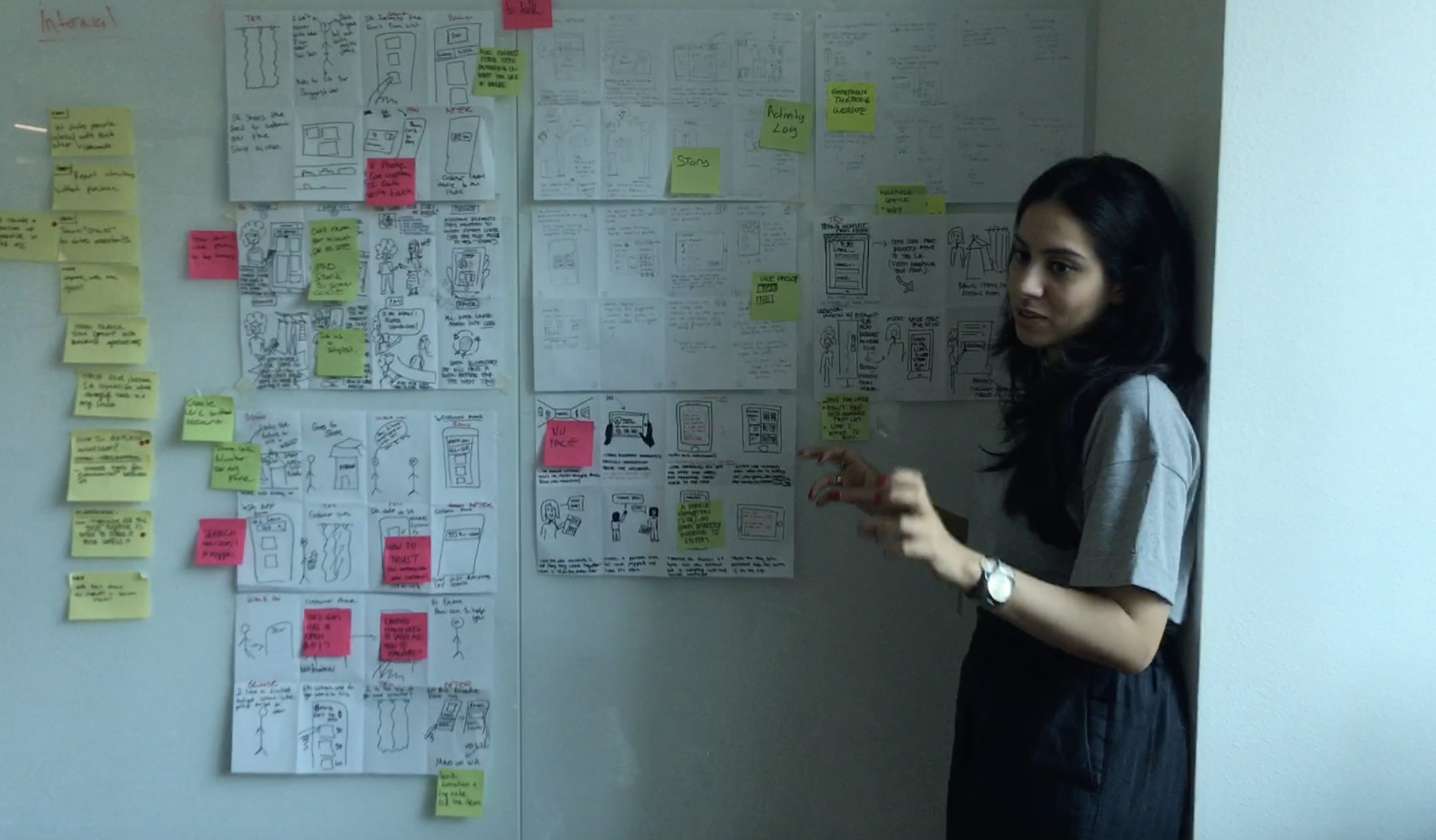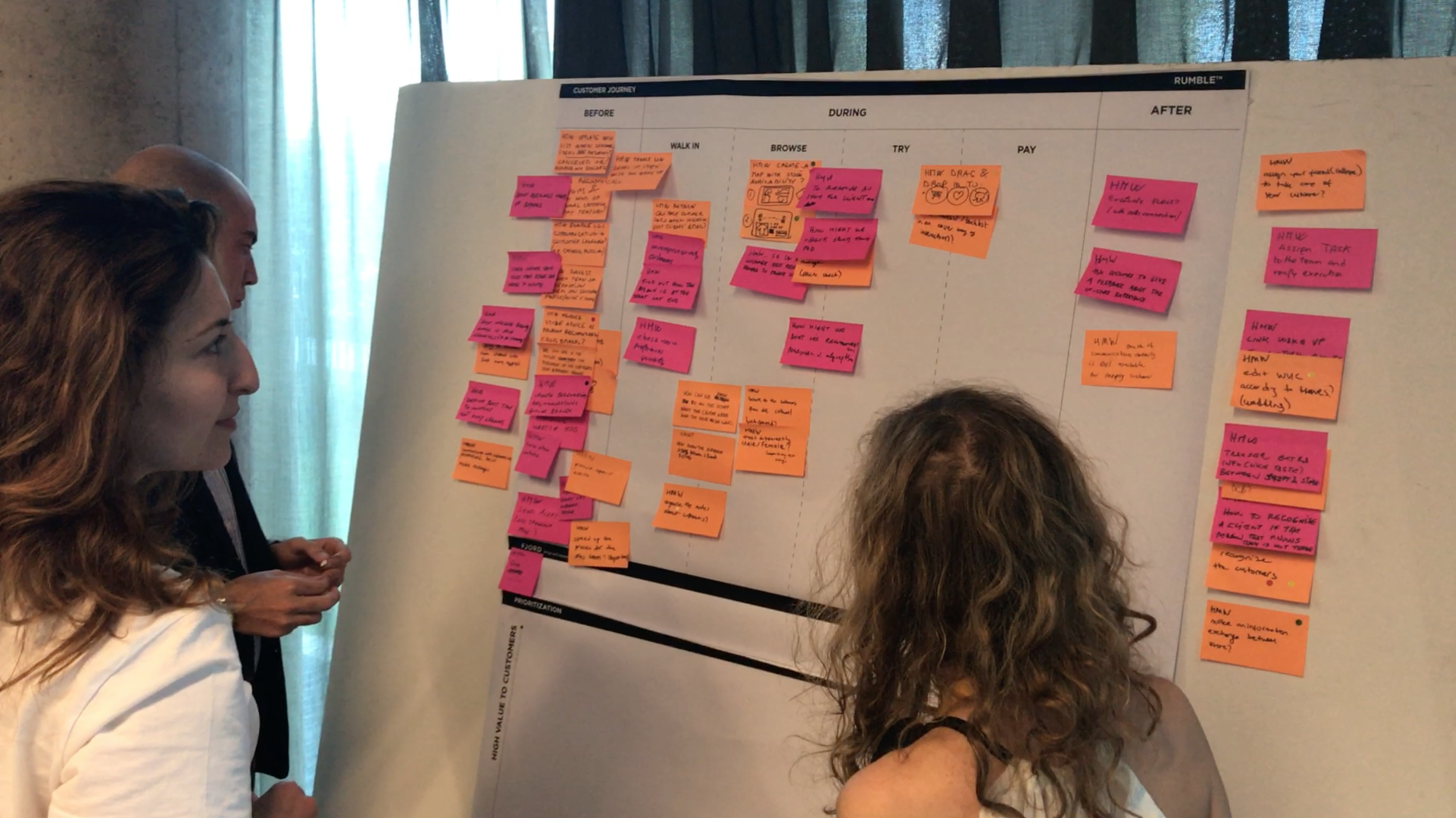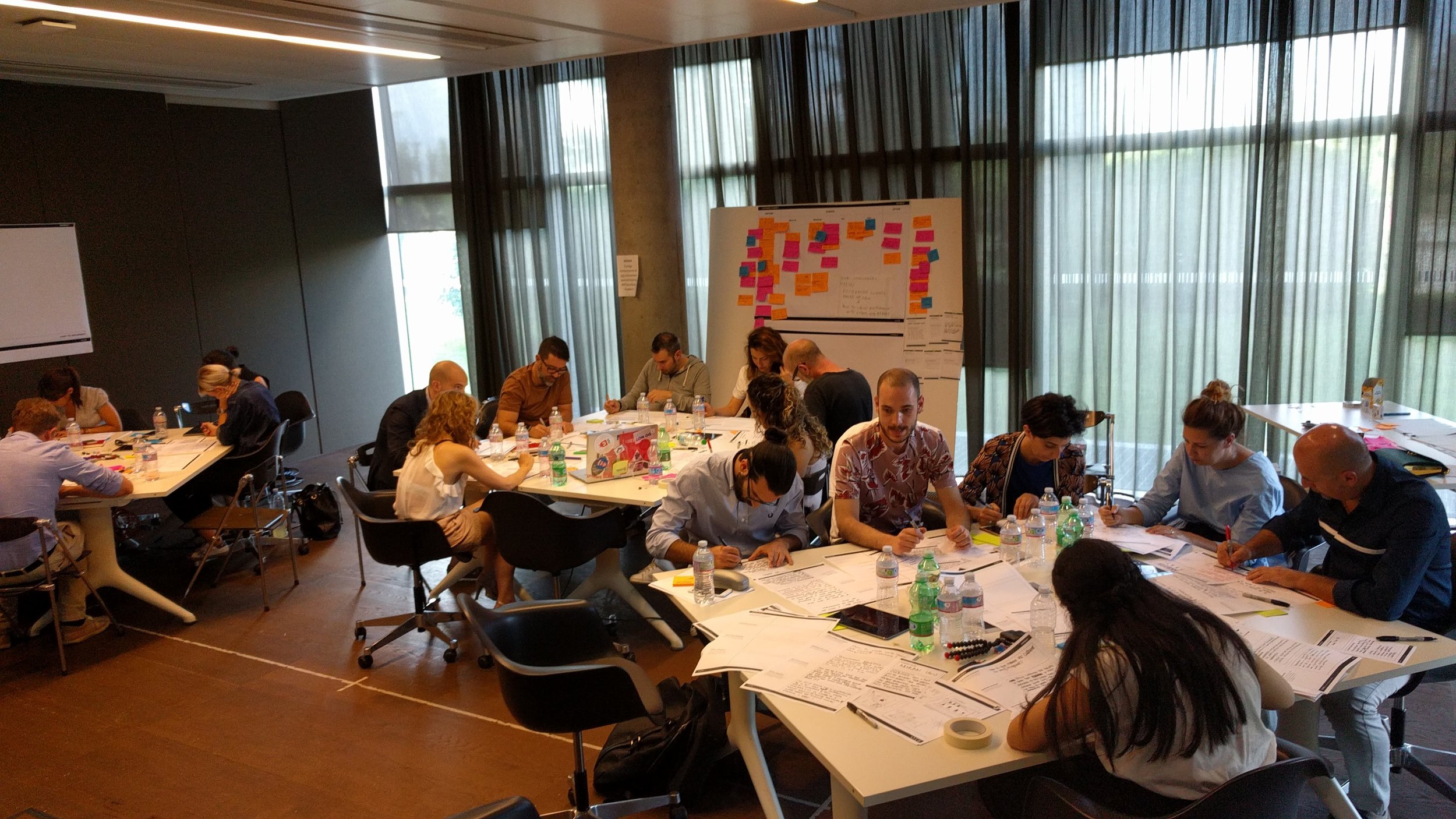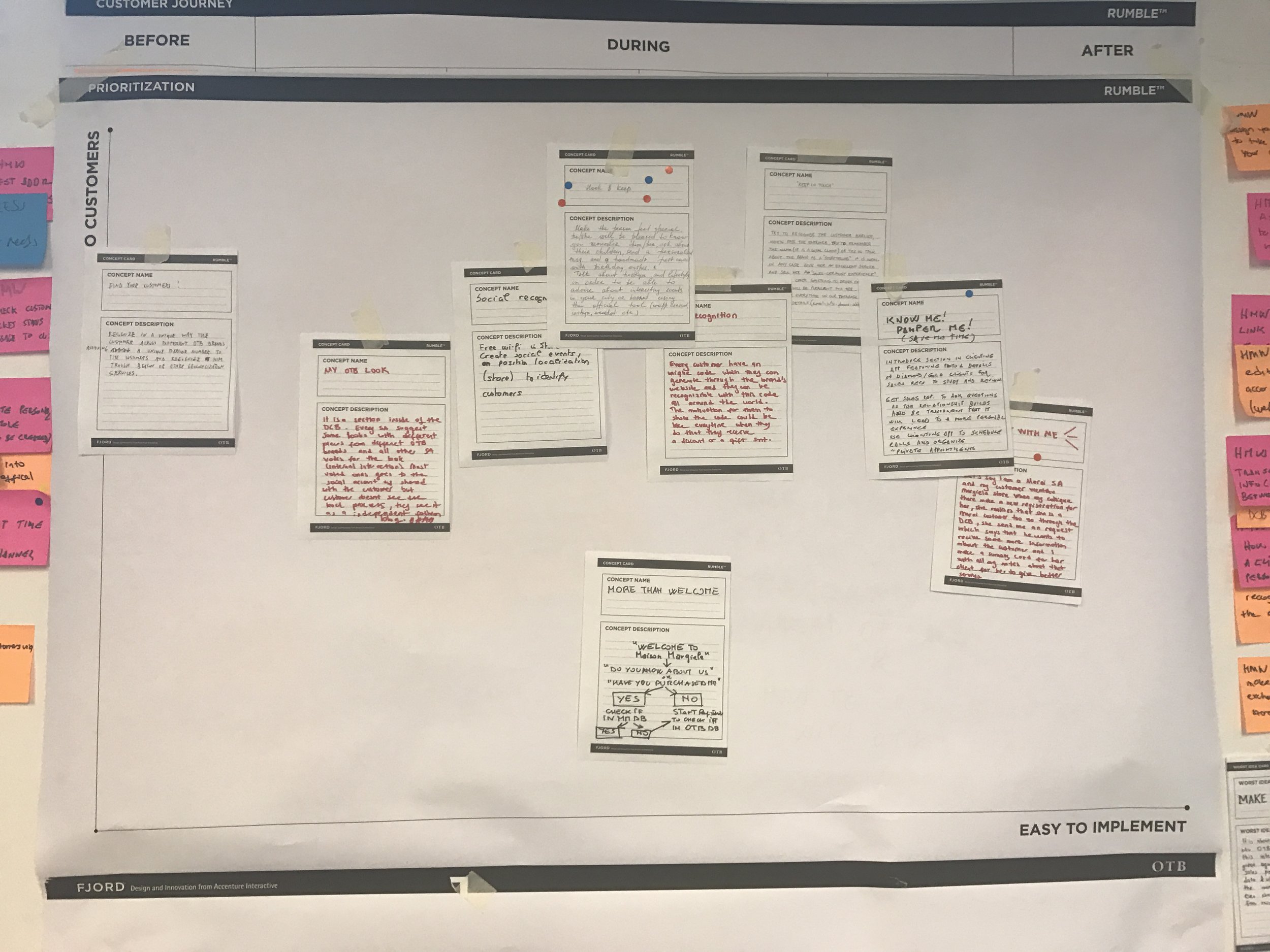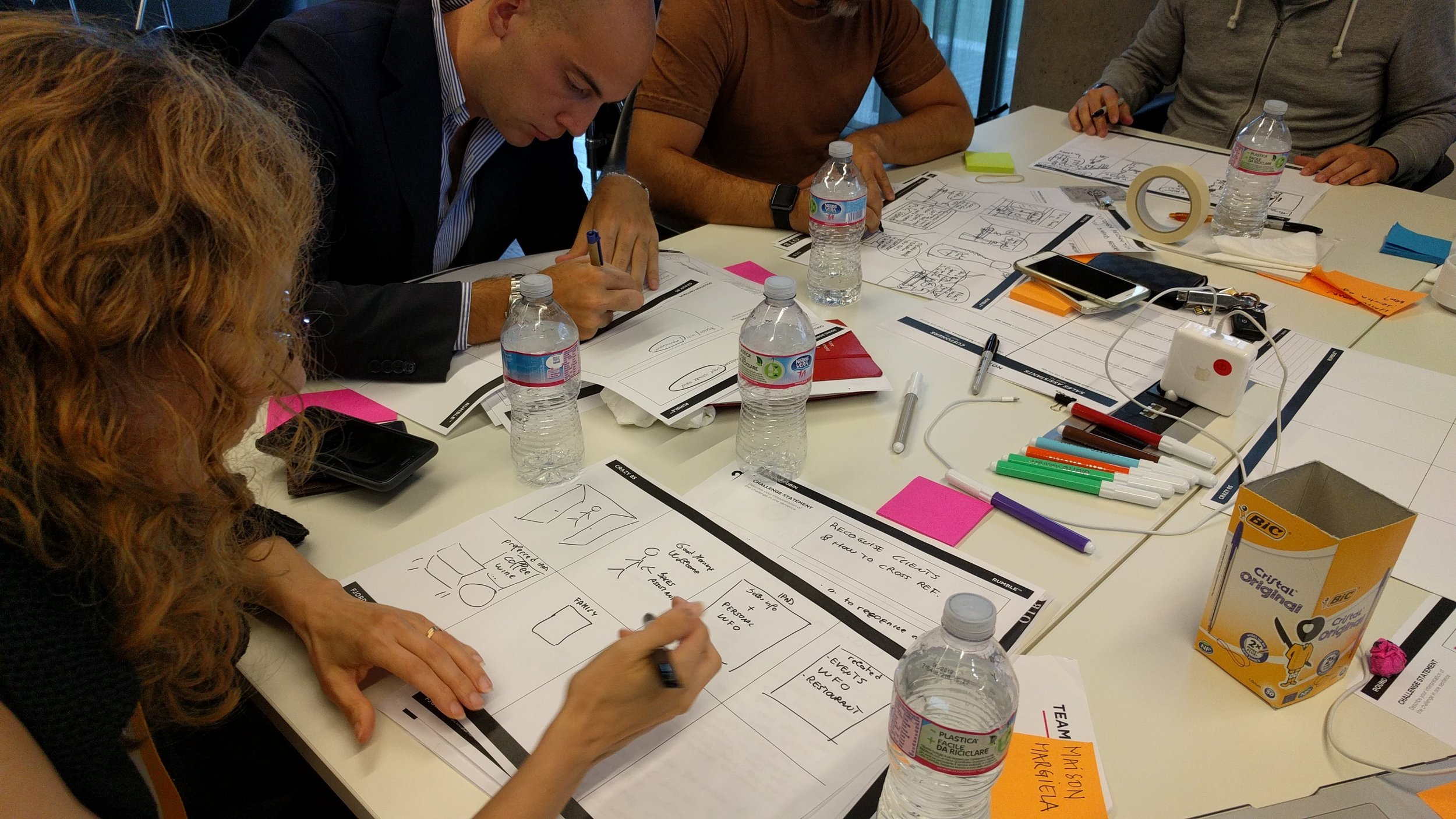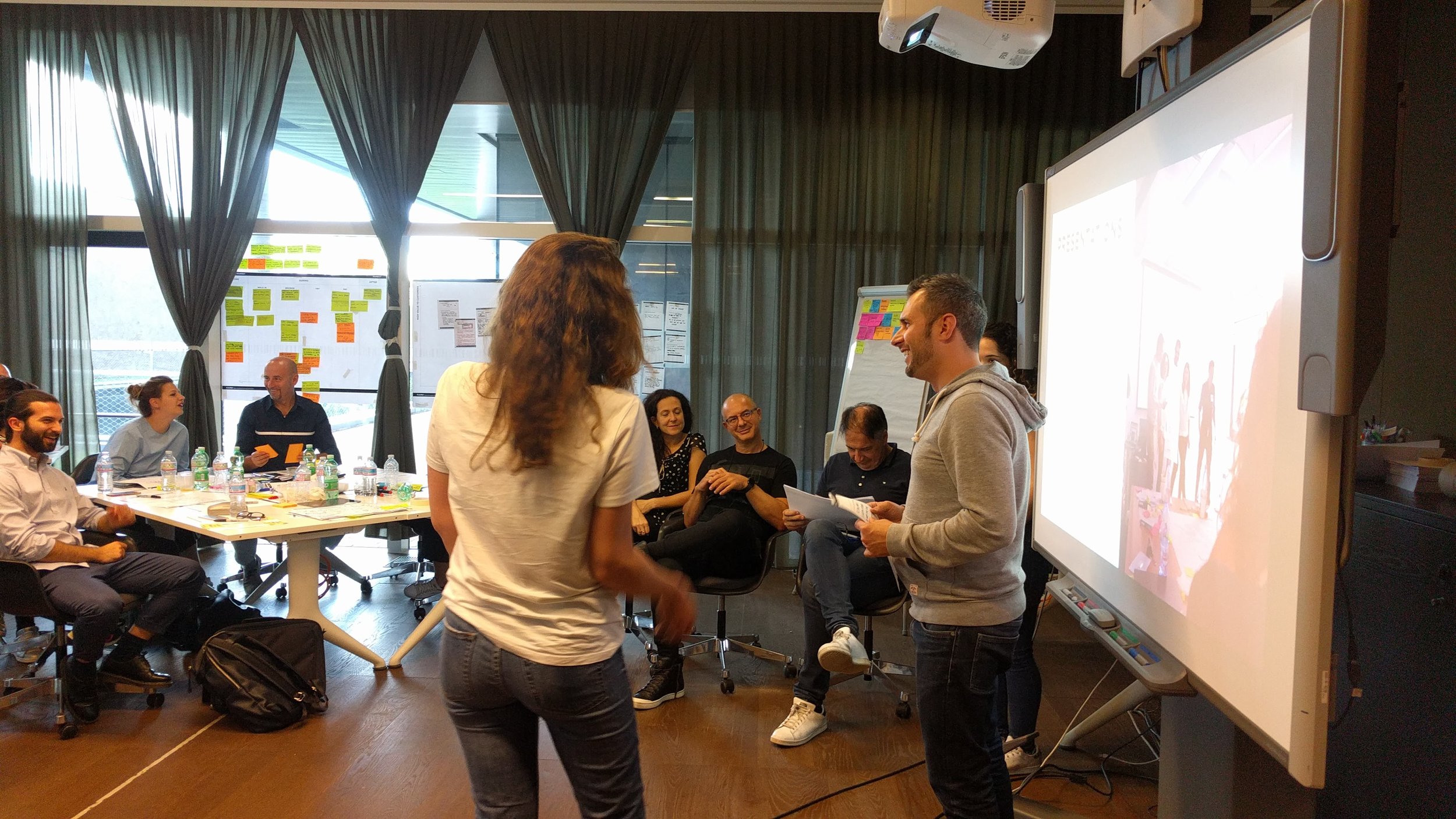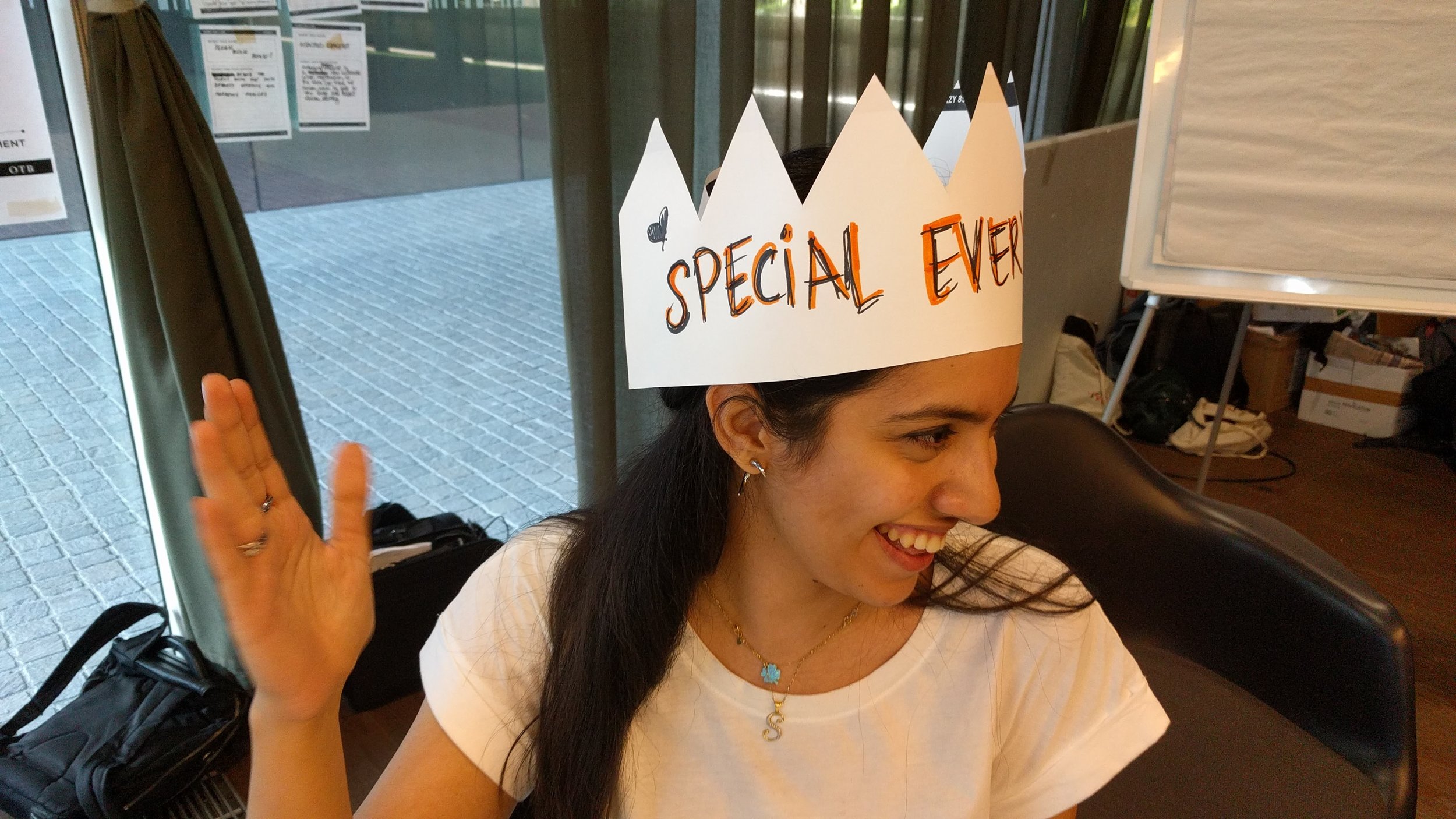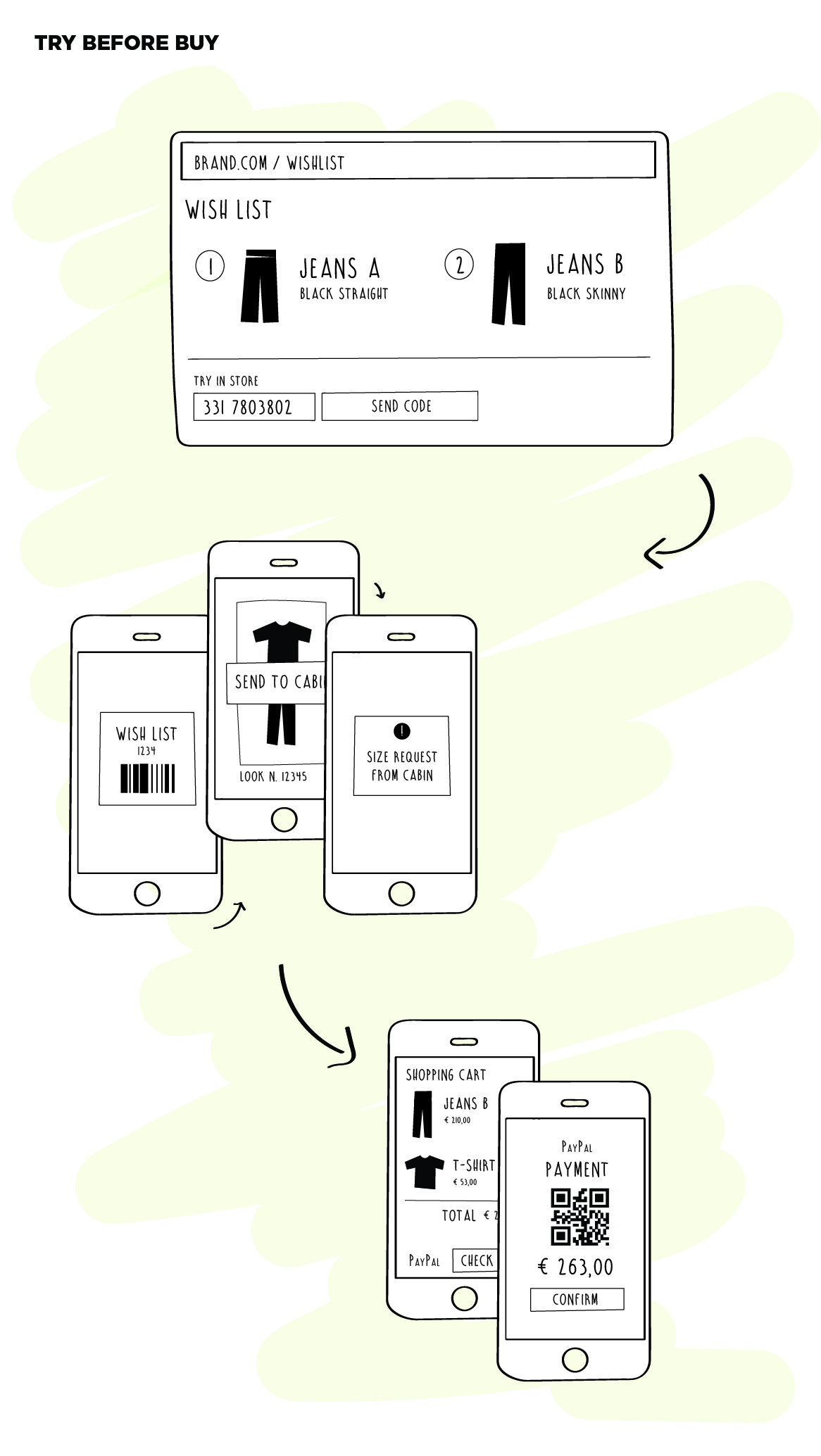4 WEEK PROJECT
Client: Retail industry
Project: Employee Experience
Improve the retail experience and empower sales assistants by giving them the right digital tools to help them in their everyday tasks and therefore enhance the in-store experience of customers
OUTCOMES
— Elaboration of a report presenting the insights found and which came from the needs and expectations of customers and stakeholders
— Sketched five storyboards of 5 potential use cases.
For each scenario we mapped all the including features and which type of customer the scenario was responding to (Try before Buy, Need for speed, Wake up Call, As One, Buyers Gonna Buy)
— Video explaining the whole process and activities of the project
MY ROLE
— I conducted interviews, shadowings and synthesized insights and turned them into design drivers
— Participated in the mapping of the journey and the ideation phase in which we were able to create meaningful concepts
— I was involved in the design phase in which I helped to sketch storyboards responding to the prioritised use cases
— I was also responsible for creating a short montage in order to show the process and results of the project to the client as part of a final deliverable
Discover
01. Field research
One-to-one Interviews With Customers
During this phase, we first conduced one-to-one interviews with customers that shop very often, to understand their needs. The insights were mapped on a matrix to understand the different profiles of customers to address solutions tailored to their needs.
One-to-one Interviews In stores, with Sales assistants
On the other hand, we also conducted one-to-one interviews with sales assistants, as well as service safaris in different stores, in order to better understand the daily experience of sales assistants.
02. Desk research
In parallel, I was in charged of preparing a research related to fashion and cross industry trends.
We came up with some patterns such as:
- Customisation and personalisation
- Connecting online and in-store experience
- Always available for support
- Fast payments
Define
After having grouped all insights that emerged from the research phase, we mapped the experience of customers before, during and after they buy.
01. Mini collaborative session with the project owner
How might we challenges
We conducted a mini session with the project owner in which we created “how might we” challenges and mapped them on the different phases of the journey.
We then voted together with the client, the most interesting challenges to focus on.
02. Initial ideation among team
We quickly created 57 ideas for the selected challenges and mapped them on the customer journey.
Sketching storyboards
After prioritising and choosing the most relevant ideas to implement, we started sketching the different storyboards.
Refinement and features
We refined the storyline, while making sure to include the interesting features.
Final sketch of storyboards digitally
We sketched 5 different storyboards responding to 5 different use cases (Try before Buy, Need for speed, Wake up Call, OTB As One, Buyers Gonna Buy) covering the most interesting features.
1 day workshop with the client for evaluation
During this workshop, we worked on the 5 use cases that we wanted to evaluate and improve together with the client. This was done by conducting specific activities such as: small interviews in groups in which we tested the features through a prototype.
We work with the client to come up with new challenges we can tackle to enrich the experience. We prioritised them on a matrix together to define the focus and direction to take.
Then, per group, we started ideating based on the challenges chosen. After that we storyboarded the concepts and presented them by acting out the experience on stage.
Design
After the workshop we did a download and gathered all the feedbacks and new enrichments coming from the client to better design the solutions. In this phase, we worked on improving and iterating the design of the 5 storyboards and we were focused on including all the interesting features that came out from the workshop.
Here are some examples of storyboards and use cases that have been created.
Team
• 1 senior interaction designer
• 1 service and interaction designer
• 1 senior visual designer
• 1 visual designer
